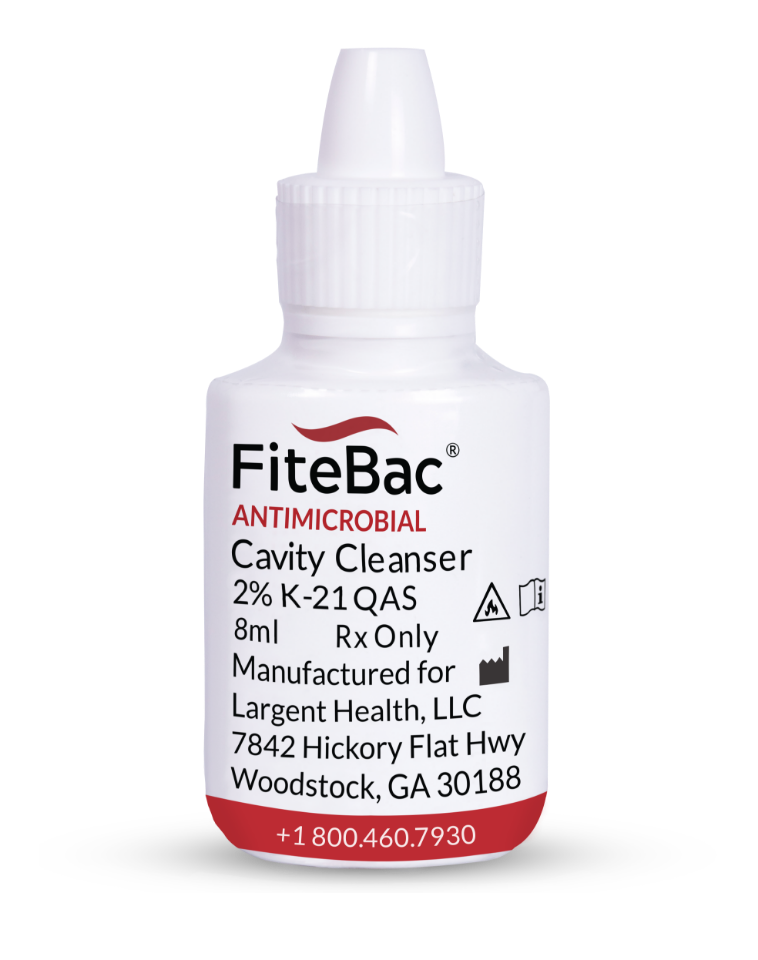Advertorial: Innovative Materials Showing Promise in Fight Against Harmful Oral Microbes
The growth of antimicrobial dental materials is ushering in new possibilities in long-term dental care.
For the last thirty years, dentistry has had a good track record when it comes to infection control. Once the concept of masks and gloves became ubiquitous in the early to mid 1980s, the profession gained a stellar reputation of protecting patients from potentially infective agents.
This battle against microbes is ongoing and, when you think about it, fighting microbes is almost the entire reason for the profession. Whether it is routine recare and prophylaxis or performing a Class II cavity preparation, most of what the profession does is about removing and restoring the aftermath of microbial invasion or decreasing microbial counts to give the body a chance to heal itself.
And, of course, the moment the prophylaxis appointment is over, the microbes begin to regrow. Like Superman who fights “The never-ending battle for Truth, Justice, and the American Way,” the profession of dentistry fights a never-ending battle against the microbes that are attempting to overtake the oral ecosystem.
Those tiny bugs are the bane of the dental profession and fighting them is a challenge. Even when a large number of those microbes are removed, the few that remain begin to immediately grow and repopulate.
To fight periodontal disease, we have chlorhexidine rinses and systemic antibiotics, but to prevent recurrent caries from affecting our restorations, we really haven’t had many choices. Most of us in the profession are familiar with quaternary ammonium compounds. Usually, we find them in different types of surface disinfectants, and they work well. However, what if we could work that agent into our restorative regimen?
Current estimates say that the life span of a Class II composite restoration is around 5 years. The main reason for a Class II composite failure is recurrent caries around the margin. Controlling the field when performing composite restorations is probably the most difficult part of the procedure. Contamination of the preparation surface at the margins can lead to low marginal bond strengths, which creates marginal failure and recurrent caries.

How can we deal with this situation? The smart minds at FiteBac Dental created an FDA-cleared cavity cleanser that contains quaternary ammonium silane. This cleanser is scrubbed onto the preparation surface before the bonding agent is applied. The cleanser leaves the quaternary ammonium silane on the dentin, and then the bonding agent is placed over. The cleanser kills microbes due to the quaternary ammonium and does not affect bond strength because of the silane.
This leaves the antimicrobial agent under the composite and at the margins. If there is ever any marginal breakdown, plaque and bacteria will quickly develop in that marginal discrepancy. However, because the FiteBac Antimicrobial Cavity Cleanser is on the surface under the restorative material, the microbes come in contact with the quaternary ammonium and are quickly killed. The molecule is not degraded over time, so it does not lose its effect. The concept is to develop materials so that when microbes come into contact with the cleanser molecule embedded in those materials, the microbes are killed, but no change occurs to the cleanser molecule itself. That means theoretically that the antimicrobial effect of the cleanser should last as long as the restoration. The molecule does not leach out over time, so the effect should be long-lasting…perhaps permanent.
The company has also created a similarly antimicrobial product that can be incorporated into the resin and used to make removable prosthetics such as Hawley retainers and removable partial dentures. Work is also under way to incorporate FiteBac’s antimicrobial chemistry into adhesives and cements, sealants, composites, glass ionomers, implants, and even restorations and appliances such as crowns, mouth guards, retainers, and dentures.
The concept is to create materials and appliances that are completely resistant to the microbes that cause infections underneath and around them. Like the cavity cleanser, the antimicrobial capabilities of these materials and appliances will not leach out over time or need to be replenished. The idea is that the antimicrobial properties will last as long as the appliance or restoration itself.
Although FiteBac is on the cutting edge of antimicrobial dental materials development, they are not the only company working in this area of research. In fact, the International Organization for Standardization (ISO) recognized this and is developing a set of testing standards to determine the antimicrobial effectiveness of dental materials. ISO/CD 3990 is currently under development as the ISO wants to be ready with standardized benchmarks for testing this new wave of materials with antimicrobial properties.
I’m excited to see a future that incorporates products such as these into our everyday clinical practice. It will be interesting to see situations where, instead of working to excavate and remove colonies of microbes, we kill them on contact with our dental materials before those microbes even get a toehold into the human body. With all the antimicrobial developments under way in dentistry, the future is bright!
